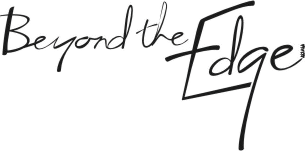The power of what’s not there
Is it a case of noticing what I’m primed to notice, or is it really a trend in the making? I’m talking about what’s not there, what we don’t do, what’s not included. Here’s the evidence
Open Space Technology: This is where I first heard the term ‘invisible facilitator’. And the term ‘do one less thing’. It’s the hardest part of learning to facilitate an open space meeting – learning to NOT do, rather than do.
White space: When I learnt some rudimentary principles of design, I learned about the impact of white space.
Twitter: Say what you need to say in 140 characters or less.
Garden design: Mass and void. Influenced by Gordon Ford and Japanese garden design and the natural order of things in nature, Sam Cox, described his philosophy of garden design around mass and void – leaving open space as a foil to the mass of plantings elsewhere. It also gives the eyes somewhere to rest.
Silence: So, so powerful. Asking a question and then being quiet. Attentive and silent. Present and silent. Giving someone else the space for them to fill however they wish.
The Naked Facilitator: A conference I helped organise a few years ago that focused on the basics, the fundamentals, getting rid of bells and whistles. Being authentic as a facilitator.
Insanely Great Slideshows: Focusing on what’s NOT said, on cutting back to the essence, on giving the audience the space to make sense themselves instead of ramming something down their throats.
Screenwriting: Learning to allow the action to say what needs to be said, instead of the dialogue.
Haiku: The Japanese poetry form that consists of three lines of five syllable, seven syllables, and five syllables. Here’s one of my favourites.
Accept offers, say
Yes! And… be open to the
ideas of others.
Advice from my mother: “If you’ve got nothing constructive to say, don’t say anything.”
A quote from our Facilitating With Confidence manifesto: “Our approach is bounded by the practice of light facilitation. Little effort, big impact.”
In Pursuit of Elegance by Matthew May: Arrived this week from the TED Book Club, a book that is subtitled Why the best ideas have something missing. Here is Guy Kawasaki’s 140 character (a la Twitter) foreword: “Less is the new more.” Easy to learn: symmetry, subtraction, and sustainability. Very valuable to do. Step 1: Read Matt’s book!!
What’s your examples?
